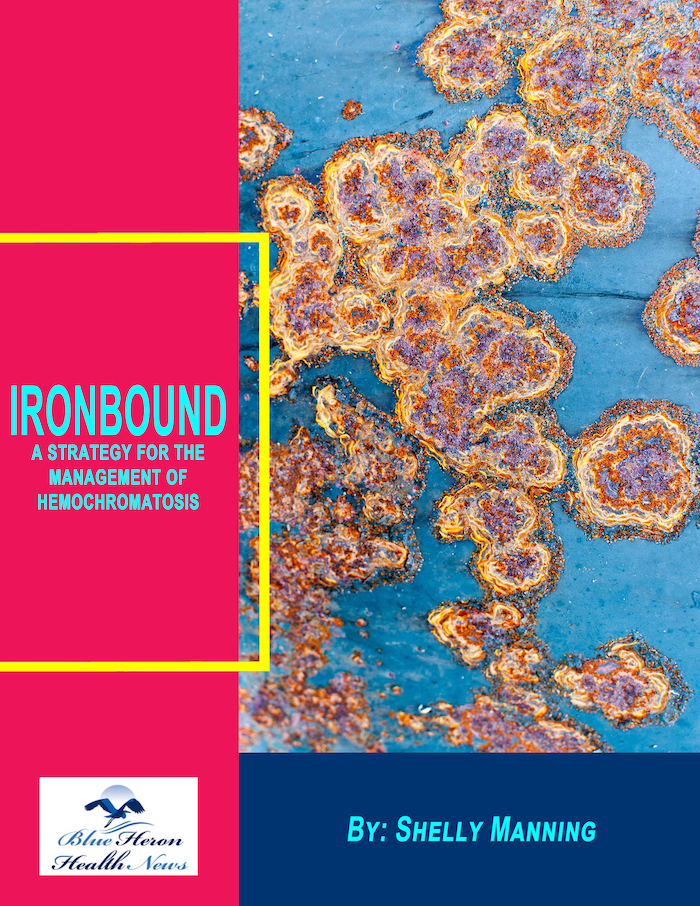
Ironbound™ A Strategy For The Management Of Hemochromatosis By Shelly Manning The 5 superfoods explained by Shelly Manning in this eBook play an important role in reducing the levels of HCT. The absorption of the excessive amount of iron by the genes of HCT can be blocked by these superfoods. In this way, the information provided in this eBook can help in resolving the problem of excess iron in your body naturally without any risk of side effects.
What is the role of the HFE gene in hemochromatosis?
Role of the HFE Gene in Hemochromatosis
The HFE gene plays a crucial role in regulating iron absorption and maintaining iron homeostasis in the body. Mutations in this gene are the primary cause of hereditary hemochromatosis (HH), a genetic disorder characterized by excessive iron accumulation. Here is a detailed look at the role of the HFE gene in hemochromatosis, its normal function, and the effects of its mutations.
Normal Function of the HFE Gene
1. HFE Gene and Protein
- Gene Location: The HFE gene is located on the short arm of chromosome 6 (6p21.3).
- Protein Function: The HFE gene encodes the HFE protein, which is involved in the regulation of iron absorption in the intestine.
2. Interaction with Other Proteins
- Transferrin Receptor (TfR1): The HFE protein binds to the transferrin receptor 1 (TfR1) on the surface of enterocytes (intestinal cells) and other cells. This interaction reduces the affinity of TfR1 for transferrin-bound iron.
- Regulation of Hepcidin: The HFE protein also influences the production of hepcidin, a key hormone produced by the liver that regulates iron homeostasis. Hepcidin inhibits iron absorption by binding to the iron exporter ferroportin, leading to its degradation.
3. Iron Absorption Regulation
- Normal Iron Absorption: Under normal conditions, the HFE protein helps to regulate iron absorption by modulating the levels of hepcidin in response to the body’s iron status. When iron levels are sufficient, hepcidin production increases, reducing iron absorption. Conversely, when iron levels are low, hepcidin production decreases, allowing more iron to be absorbed.
Mutations in the HFE Gene and Their Effects
1. Common Mutations
- C282Y Mutation: The most common mutation associated with hereditary hemochromatosis. It involves the substitution of tyrosine for cysteine at position 282 of the HFE protein.
- H63D Mutation: Involves the substitution of aspartic acid for histidine at position 63. It is less common and typically results in a milder form of the disease.
- S65C Mutation: Involves the substitution of cysteine for serine at position 65. This mutation is rare and generally has a minor impact on iron overload when present alone.
2. Pathophysiology of Mutant HFE Protein
- Loss of Function: Mutations in the HFE gene, particularly the C282Y mutation, result in a defective HFE protein that cannot effectively bind to TfR1 or influence hepcidin production.
- Reduced Hepcidin Production: The defective HFE protein leads to inappropriately low levels of hepcidin, even when body iron levels are high. This results in unchecked iron absorption from the diet.
3. Increased Iron Absorption
- Enterocytes: In the absence of adequate hepcidin regulation, enterocytes continue to absorb iron unabatedly. This excess iron is then transported into the bloodstream.
- Systemic Iron Overload: The excess iron is deposited in various tissues, including the liver, heart, pancreas, joints, and skin, leading to the clinical manifestations of hereditary hemochromatosis.
Clinical Manifestations of Hereditary Hemochromatosis
1. Early Symptoms
- Fatigue and Weakness: Generalized tiredness and lack of energy.
- Joint Pain: Commonly affects the knuckles, hips, and knees.
2. Advanced Symptoms
- Liver Disease: Includes hepatomegaly (enlarged liver), fibrosis, cirrhosis, and an increased risk of liver cancer.
- Diabetes: Iron deposits in the pancreas can impair insulin production.
- Cardiomyopathy: Iron overload in the heart can cause arrhythmias and heart failure.
- Skin Pigmentation: Bronze or gray discoloration of the skin due to iron deposition.
- Hypogonadism: Iron accumulation in the pituitary gland can lead to reduced hormone production and testicular atrophy.
Diagnosis and Genetic Testing
1. Biochemical Tests
- Serum Ferritin: Elevated levels indicate increased iron stores.
- Transferrin Saturation: High levels suggest increased iron absorption and overload.
2. Genetic Testing
- HFE Mutation Testing: Genetic testing for the C282Y and H63D mutations in the HFE gene is used to confirm the diagnosis of hereditary hemochromatosis.
- Other Genetic Tests: In cases where HFE mutations are not found, testing for mutations in other genes associated with iron overload (e.g., HJV, HAMP, TFR2, SLC40A1) may be considered.
Management and Treatment
1. Phlebotomy
- Mechanism: Regular blood removal to reduce iron levels.
- Frequency: Initially performed weekly or biweekly until iron levels normalize, followed by maintenance phlebotomies every few months.
2. Iron Chelation Therapy
- Use: For patients who cannot tolerate phlebotomy or have severe iron overload.
- Medications: Deferoxamine, deferasirox, and deferiprone, which bind to excess iron and facilitate its excretion.
3. Dietary Management
- Iron Intake: Avoid iron supplements and limit dietary iron intake.
- Vitamin C: Reduce consumption of vitamin C supplements, as vitamin C enhances iron absorption.
- Alcohol: Limit alcohol intake to reduce the risk of liver damage.
4. Monitoring and Follow-Up
- Regular Monitoring: Periodic assessment of iron levels, liver function, and other relevant parameters to manage the condition effectively.
- Screening for Complications: Regular screening for complications such as liver disease, diabetes, and cardiomyopathy.
Conclusion
The HFE gene plays a crucial role in regulating iron absorption and maintaining iron homeostasis. Mutations in the HFE gene, particularly the C282Y and H63D mutations, lead to hereditary hemochromatosis by impairing hepcidin production and causing excessive iron absorption. This results in iron overload and damage to various organs. Understanding the role of the HFE gene and the effects of its mutations is essential for diagnosing and managing hereditary hemochromatosis. Early diagnosis and appropriate treatment, including phlebotomy, iron chelation, and dietary management, can help prevent complications and improve patient outcomes.
Ironbound™ A Strategy For The Management Of Hemochromatosis By Shelly Manning The 5 superfoods explained by Shelly Manning in this eBook play an important role in reducing the levels of HCT. The absorption of the excessive amount of iron by the genes of HCT can be blocked by these superfoods. In this way, the information provided in this eBook can help in resolving the problem of excess iron in your body naturally without any risk of side effects.
